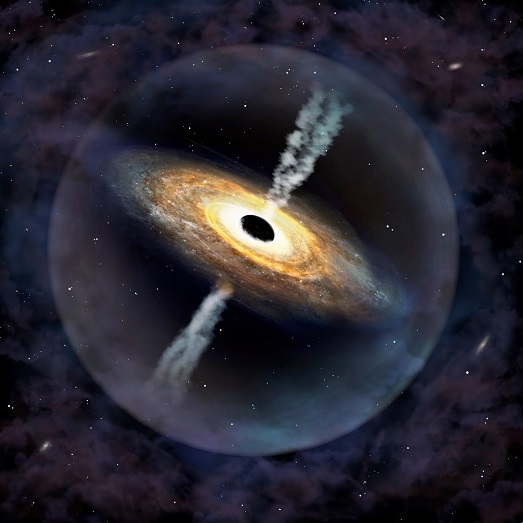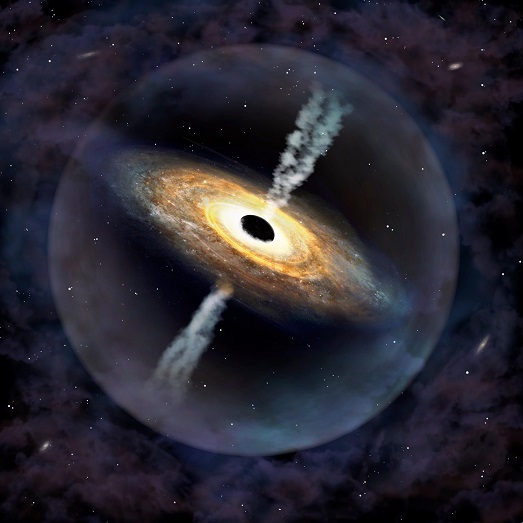Many black holes are formed after supernova explosions, but there are also many exceptions, such as supermassive black holes. Astronomers speculate that supermassive black holes exist in the quasars of the early universe, but the formation mechanism is still unknown.
Recently, astronomers discovered a quasar which has existed since 13 billion years ago. It is the second farthest quasar known and has a monster black hole with 1.5 billion times the mass of the Sun. The mass of this supermassive black hole is at least 2 times bigger than that in another known quasar further away. To achieve the current mass, it had to have at least 10,000 times the mass of the Sun within about 100 million years since the birth of the universe.
How can such a supermassive celestial object form within a short period of time? Astronomers have different thoughts, one of which states the supermassive black holes are the result of a series of chain reactions. Nascent black holes radiate energy during accretion and heat up gas clouds nearby to make them collapse more easily. It ends up increasing the mass of the black holes, so that more energy is radiated and the same process repeats. However, a convincing theory is not yet available. The newly discovered quasar is thus a great challenge to our understanding on the origin of supermassive black holes, formation of galaxies, and the evolution of the universe.




